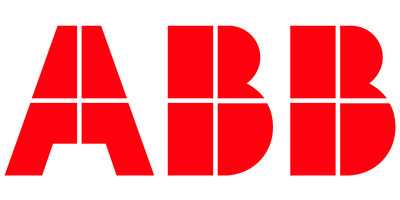SRD1020 THRU SRD1060
10.0 AMPS. Schottky Barrier Rectifiers
Voltage Range
20 to 60 Volts
Current
10.0 Amperes
Features
a Highly stabl e oxide pass i vat ed j unction
a Guarding for stress protection
a Matched dual die c o nstruction – May be
Paralleled for high current output
a High dv/dt capability
a Short heat sink tap manufactured – not sheared
a Very low forward voltage drop
a Epoxy meets UL94, VO at 1/8”
Mechanical Data
a Cases: Epoxy, molded
a Weight: 0.4 gram (approximately)
a Finish: Al l external surfaces corrosion resi stant and
terminal leads are readily solderable
a Lead and mount i ng surface t emperature f or
solderin g purposes: 260OC max. for 10 seconds
a Shipped 75 units per plast i c tube
a
Marking: SRD1020, SRD1030, SRD1040,
SRD1050, SRD1060
D-PAK
Dime nsions in i nches and (milli meters )
Maximum Ratings and Electrical Characteristics
Rating at 25ambient temperature unless otherwise specified.
Single phase, half wave, 60 Hz, resistive or inductive load.
For capacitive load, derate current by 20%
Type Number SRD1020 SRD1030 SRD1040 SRD1050 SRD1060 Units
Maximum Recurrent Peak Reverse Vol tage 20 30 40 50 60 V
Maximum RMS Voltage 14 21 28 35 42 V
Maximum DC Bl oc king Voltage 20 30 40 50 60 V
Maximum Average Forward Rectified Current
at TC=115 10.0 A
Nonrepetitive Peak Surge Current
(Surge Applied at Rated Load Conditions Halfwave,
Single Phase, 60 HZ)
75
A
Maximum Instantaneous Forward Voltage at
@5Amps 0.55 0.7 V
Maximum D.C. Reverse Current @ Tc=25
at Rated DC Blocking Voltage(Note 1) @ Tc=100 2.0
30 mA
mA
Maximum Thermal Resist ance Per Leg
(Note 2) RJC
R
JA
3
75
/W
Operating Junction Temperature Range TJ -55 to +125
Storage Temperature Range TSTG -55 to +150
Notes: 1. Pulse Test: Pulse Width = 300 us, 2.0% Duty Cycle.
2. Thermal Resistance from Junction to Case and Thermal Resistance from Junction to
Ambient.
Marking 0 5
0 5
30 5
.250(6.55)
.246(6.45)
.211(5.36)
.207(5.26)
.274(6.95)
.270(6.85)
.250(6.55)
.246(6.45)
.024(0.60)
.031(0.80)
.165(4.20)
.149(3.80)
.043(1.10)
.035(0.90)
.093(2.35)
.089(2.25)
.013(0.54)
.011(0.48)
.384(9.75)
.364(9.25)
.053(1.30)
.045(1.10)
.059(1.45)
.039(0.95)
.112(2.85)
.092(2.35)
.211(5.36)
.207(5.26)
.013(0.54)
.011(0.48)
123
4
RATINGS AND CHARACTERISTIC CURVES (SRD1020 THRU )SRD1060
FIG.1- FORWARD CURRENT DERATING CURVE
60
REVERSE VOLTAGE (V)
FIG.2-TYPICAL REVERSE CURRENT PER LEG
FIG.3- MAXIMUM FORWARD VOLTAGE PER LEG
INSTANTANEOUS FORWARD CURRENT. (A)
140100
80
20 0
4
3510
0.1
MAXIMUM INSTANTANEOUS FORWARD VOLTAGE. (V)
Tj=125 C
LEAD TEMPERATURE. ( C)
O
PEAK FORWARD SURGE CURRENT. (A)
AVERAGE FORWARD CURRENT.(A)
1E+0
2
0
6
8
10
12
14
16
040 120
FIG.5- TYPICAL JUNCTION CAPACITANCE PER LEG
REVERSE VOLTAGE. (V)
JUNCTION CAPACITANCE ( )pF
Tj=150 C
0
Tj=25 C
0
Tj=25 C
FIG.5- TYPICAL OPERATION TEMPERATURE DERATING
PER LEG
Tj=100 C
Tj=25 C
20 30
100E+3
10E+3
1E+3
100E+6
10E+6
1E+6
125
115
105
95
85
75
65
0 5 10 15 20 25 30 35
DC REVERSE VOLTAGE. (V)
DERATED OPERATION TEMPERRATURE ( C)
o
R JA=75 C/W
o
0 5 10 15 20 25
10
100
1000
0.10 0.30 0.50 0.70 0.90 1.10
1.0
10
100
FIG.4- TYPICAL FORWARD CHARACTERISTICS
PER LEG
INSTANTANEOUS FORWARD CURRENT. (A)
.2 .3 .4 .5 .6 .7 .8 .9 1.0 1.1
0.1
1.0
10
50
INSTANTANEOUS FORWARD VOLTAGE. (V)
SRD1020-1040
SRD1050-1060



